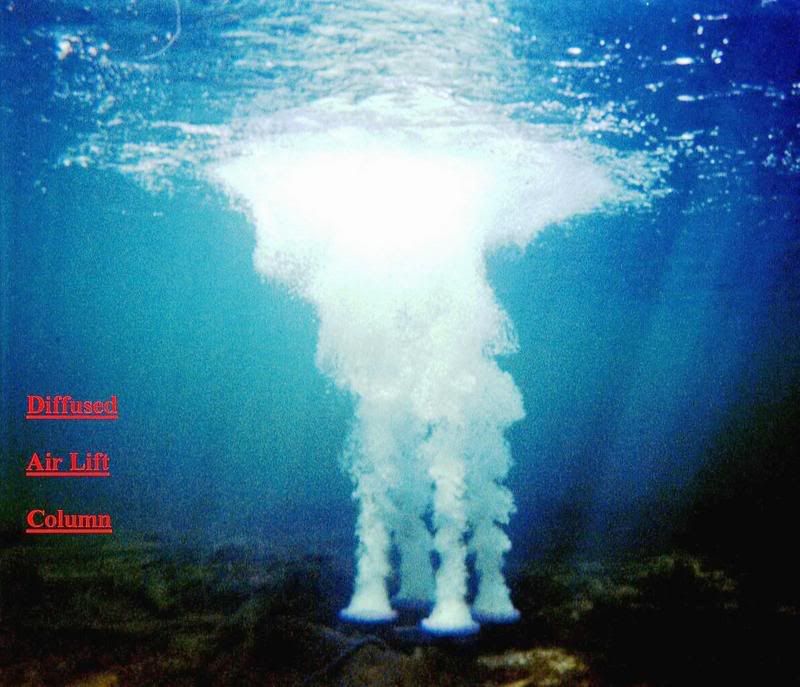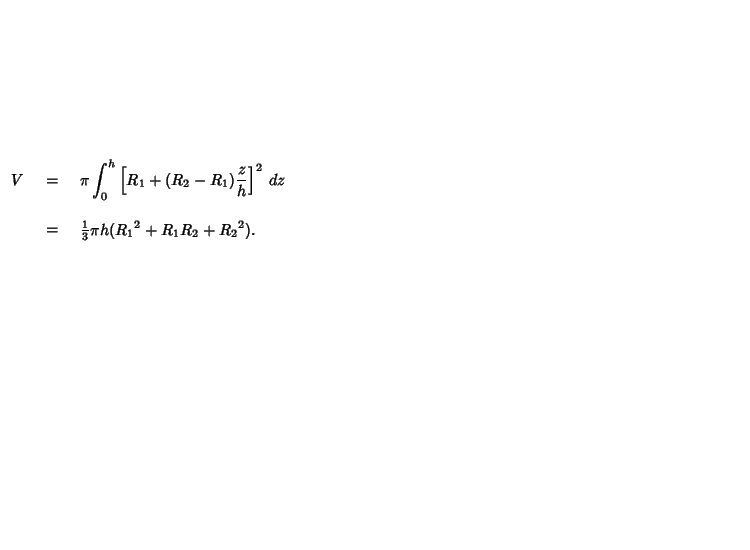|
Forums36
Topics40,961
Posts557,957
Members18,500
| |
Most Online3,612
Jan 10th, 2023
|
|
|
7 members (Lake8, Sunil, J. R., FishinRod, Jason D, Perch Pond, Augie),
1,471
guests, and
417
robots. |
|
Key:
Admin,
Global Mod,
Mod
|
|
|
|
Joined: Aug 2002
Posts: 20,043 Likes: 1
Hall of Fame  Lunker
|
OP

Hall of Fame  Lunker
Joined: Aug 2002
Posts: 20,043 Likes: 1 |
Specifically when a diffuser pushes water to the surface how thick is the moving layer at the surface? The reason I ask this is I have a diffuser boil that comes up between two floating cages. I'm curious how thick the moving water layer is that comes to the surface in regards to movement of water through the cages. Any ideas from the experts?
I suppose I can drop a sinking strand of nylon rope in the cage next time I remove the cover to clean it, to see how deep the moving water is. However I was curious if anyone knew.
If pigs could fly bacon would be harder to come by and there would be a lot of damaged trees.
|
|
|
|
|
Joined: Mar 2005
Posts: 21,499 Likes: 266
Moderator Hall of Fame 2014  Lunker
|

Moderator Hall of Fame 2014  Lunker
Joined: Mar 2005
Posts: 21,499 Likes: 266 |
These pics may help you visualize the air plume. No expert here but I bet it depends on the type diffuser and amount of air flow and depth.  
|
|
|
|
|
Joined: May 2004
Posts: 13,972 Likes: 276
Moderator Lunker
|

Moderator Lunker
Joined: May 2004
Posts: 13,972 Likes: 276 |
Trying to answer this analytically, I think the cross sectional area of the lifting column times it's flow rate must equal the cross sectional area of the dispersed surface flow time it's flow rate. Since the cross sectional area of the surface flow rapidly increases with the distance moved away from the boil, the thickness of the horizontal flow isn't going to be much (wrt the lift column size) unless the flow slows way down moving away from the boil. I've always observed the horizontll bubble movement to be pretty quick.
Practically speaking, from swimming around and through my boil, I have found the thickness of the surface flow is pretty thin.
As Eric noted, the more water being lifted, the thicker the horizontal flow.
"Live like you'll die tomorrow, but manage your grass like you'll live forever." -S. M. Stirling ![[Linked Image from i.pinimg.com]](https://i.pinimg.com/736x/ed/b5/e7/edb5e7f935843b996cf52be593c9ebd2--smoothie-smooth-collie.jpg)
|
|
|
|
|
Joined: Apr 2002
Posts: 1,011
Lunker
|

Lunker
Joined: Apr 2002
Posts: 1,011 |
I thought of starting a new thread for this but my question may fit into this topic. With Eric's pictures as reference, my small BG pond currently has two 9" membrane disk diffusers spaced 30-35' apart at 8' and 11' depths. If the diffusers were configured side by side, as shown above, would the mixing effect be compounded?
|
|
|
|
|
Joined: Aug 2002
Posts: 20,043 Likes: 1
Hall of Fame  Lunker
|
OP

Hall of Fame  Lunker
Joined: Aug 2002
Posts: 20,043 Likes: 1 |
Russ,
I'm no expert on diffusers but I would think yes. The reasons I say this is I have at one time had four airstones on one line and it created on hell of a boil. I also see where they are sold that way for larger bodies of water.
BTW thank you for your answers. Seems to me I culd put these diffusers pretty close to a cage that is 4 feet deep. If the movement at the surface was too intense for bluegill or bass the fish could always move deeper.
If pigs could fly bacon would be harder to come by and there would be a lot of damaged trees.
|
|
|
|
|
Joined: Nov 2004
Posts: 551
Ambassador <br /> Field Correspondent Lunker
|

Ambassador <br /> Field Correspondent Lunker
Joined: Nov 2004
Posts: 551 |
Theo, You are on the right track. Using a truncated cone formula from calculus one can calculate the flow rate horizontally. The volume of the airlift is calculated as the volume of a conical frustim:  R1 R1 = 0.54 feet Radius of diffuser R2 = 1.51 feet Radius of air column at surface h = 6.0 feet Distance between diffuser and surface v = 1592 gallons Velocity of water movement toward the surface is approximately 1 foot per second. Induced circulation as determined by dye studies indicate water surrounding the bubble column is pulled upward resulting in about a 50% increas in airlift capacity. Yes, by placing the diffusers in close proximity to one another, but not too close, the lifting capabilities are increased. If placed too far apart, they act independently with one another, too close, they are counter productuctive and not entraining the maximum amount of water. The ways to ensure the diffusers you are using are placed the correct distance apart is to use underwater dye test and to check with the diffuser manufacturer with the suggested separation.
|
|
|
|
|
Joined: Dec 2004
Posts: 709
Ambassador Lunker
|

Ambassador Lunker
Joined: Dec 2004
Posts: 709 |
Cary is correct regarding the formula we use to estimate the horizontal flow rate. As for the thickness of the layer of moving water at the surface, we have not tested. We've never studied the depth of the surface outflow. I would expect it to vary with distance from the boil center. Next time one of our biologists visits a case study site we will try using a 4' rebar rod and attach colorful flags to it every 6 inches and lower it into a boil. Interesting subject - to be continued....
|
|
|
|
|
Joined: Nov 2004
Posts: 551
Ambassador <br /> Field Correspondent Lunker
|

Ambassador <br /> Field Correspondent Lunker
Joined: Nov 2004
Posts: 551 |
Sue,
It would depend on the surface tension, wind currents and other factors like high amounts of planktonic algae, etc. In diving around many diffusers yours, mine and even Aquatic Eco's, I have felt the flow outward only at the surface and not at depth. At depth, the flow always was up.
In Cecil's case, as the bubbles hit the bottom of the cages, the direction of the flow is inturrupted thereby creating flow outward in conjuction to upward.
I too think it would be interesting how far the flow is created. I am visiting one of our test sites on Thursday and if you don't mind, I would like to use your idea of the rebar with flags method.
|
|
|
Moderated by Bill Cody, Bruce Condello, catmandoo, Chris Steelman, Dave Davidson1, esshup, ewest, FireIsHot, Omaha, Sunil, teehjaeh57 |
|